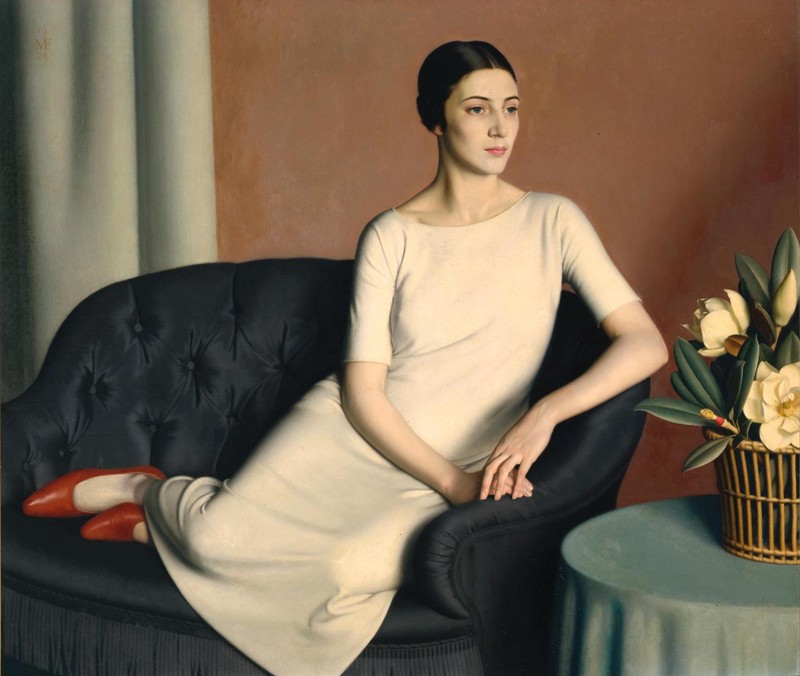Realisms
07 Jan 2013 - 07 Sep 2015

Meredith Frampton
Marguerite Kelsey 1928
Oil on canvas
support: 1208 x 1412 mm
frame: 1316 x 1518 x 59 mm
Presented by the Friends of the Tate Gallery 1982© Tate
Marguerite Kelsey 1928
Oil on canvas
support: 1208 x 1412 mm
frame: 1316 x 1518 x 59 mm
Presented by the Friends of the Tate Gallery 1982© Tate
In spite of the challenges to representational art, many twentieth-century artists remained committed to capturing the world around them.
‘Realism’ was itself a contested term, with different styles emerging, but also different interpretations of its significance. Because it was considered to be immediately understandable, realism came to be associated with social equality – an art made for ordinary people. When the poet Jean Cocteau coined the term ‘A Call to Order’ around 1920, he saw a return to realism among modernists as contributing to the reconstruction of society after the First World War. In the more extreme climate of the 1930s, realistic styles were annexed to support opposing political ideologies. In Nazi Germany, an implausibly heroic style was officially sanctioned as a weapon against modernism, while Social Realism in the Soviet Union sought to celebrate the ordinary worker. In each case, realism became the point where art and propaganda met.
Artists worked with and against these expectations, in some cases simply attempting to set down their own concrete experience within a world of shifting values. André Derain saw his sober work in these terms, as a timeless art within a historical tradition. By contrast, the tendency known as Neue Sachlichkeit (New Objectivity), including artists such as Christian Schad, had an uncanny precision that startlingly captured the decadence of Germany in the 1920s. The murals of Diego Rivera reflect an entirely different scale of ambition, that of the political purpose and power of making public monuments.
Text by Matthew Gale
‘Realism’ was itself a contested term, with different styles emerging, but also different interpretations of its significance. Because it was considered to be immediately understandable, realism came to be associated with social equality – an art made for ordinary people. When the poet Jean Cocteau coined the term ‘A Call to Order’ around 1920, he saw a return to realism among modernists as contributing to the reconstruction of society after the First World War. In the more extreme climate of the 1930s, realistic styles were annexed to support opposing political ideologies. In Nazi Germany, an implausibly heroic style was officially sanctioned as a weapon against modernism, while Social Realism in the Soviet Union sought to celebrate the ordinary worker. In each case, realism became the point where art and propaganda met.
Artists worked with and against these expectations, in some cases simply attempting to set down their own concrete experience within a world of shifting values. André Derain saw his sober work in these terms, as a timeless art within a historical tradition. By contrast, the tendency known as Neue Sachlichkeit (New Objectivity), including artists such as Christian Schad, had an uncanny precision that startlingly captured the decadence of Germany in the 1920s. The murals of Diego Rivera reflect an entirely different scale of ambition, that of the political purpose and power of making public monuments.
Text by Matthew Gale
